The last piece from Bandwidth Audio up for review is the Kaskode One. The Kaskode, as you may have guessed by the title, is a Phono Stage. This phono stage is not your average piece; it comes packed with features to make sure you get the most out of your cartridge, whether it be an MM or MC. The Kaskode One starts at $5299.99, and you can add on the MC modules for $599.99 for a total as-tested price of $5,899.98. While it isn’t cheap by any means, it is within the realm of affordability for most serious vinyl playback enthusiasts. This is a tube phono stage with both balanced and single-ended input for MC users.
Unboxing and Setup
Unboxing is pretty straightforward and much like the previous pieces from Bandwidth, you will find the custom-fit packaging keeping it safe, as well as the power cable and instruction manual. The tubes for the Kaskode come pre-installed, so don’t worry if you don’t see any small boxes in there as well. The setup is more complex or can be more complex than your average phono stage if you opt to set up the loading for your cartridge. Mat has created an Excel spreadsheet where you plug in the specs of your cartridge, and it will calculate the most optimal loading settings. You then use the dip switches inside the chassis to match the number you got from the spreadsheet. It is worth mentioning that this is a most likely scenario; you may find that you need to make adjustments after listening, but it gets you to a really good, if not the best, starting point. For MC users, there are also the step-up ratio selections and RSL that you can adjust in a similar manner. There are also jumpers inside for subsonic rumble control that you can opt to use or not use depending on your needs. Matt made a really good video, I have below that not only explains how it works in the Kaskode, but may be the best explanation of loading I have ever seen, and can be very helpful to anyone wanting to learn more about cartridge loading.
Sound
Vinyl playback can be a finicky thing to discuss, it’s a finicky medium to begin with, one that requires so many things to be right in order to get the most out of the music. You start with the pressing itself, which the quality of will directly affect everything else, and not all pressings are made equal. After the pressing, you have the cartridge, tonearm, table, wiring, phono stage, and that is all before it even hits your preamp. Did I mention you have to set all of that up correctly, and the tiniest changes can affect the sound? Once you have your cartridge aligned and your tracking weight set and the speed dialed in, you get to the phono stage. The phono stage is as crucial to the end result as each other piece in the chain, as it takes that tiny signal from the cartridge and not only amplifies it to line voltage, but also has to correct the frequency response based on the RIAA curve applied to the pressing. If you aren’t quite sure what the curve is all about, record grooves can only be so wide and deep and still fit on the record, and also not overwhelm the stylus, so lower frequency amplitudes are lowered as they would require an impractically large groove. Your phono stage then takes that signal and adds back in the lowered dB in the low end. While applying the RIAA curve is rather simple, in that it is well understood what needs to be done, implementation can vary, changing how well it is done.
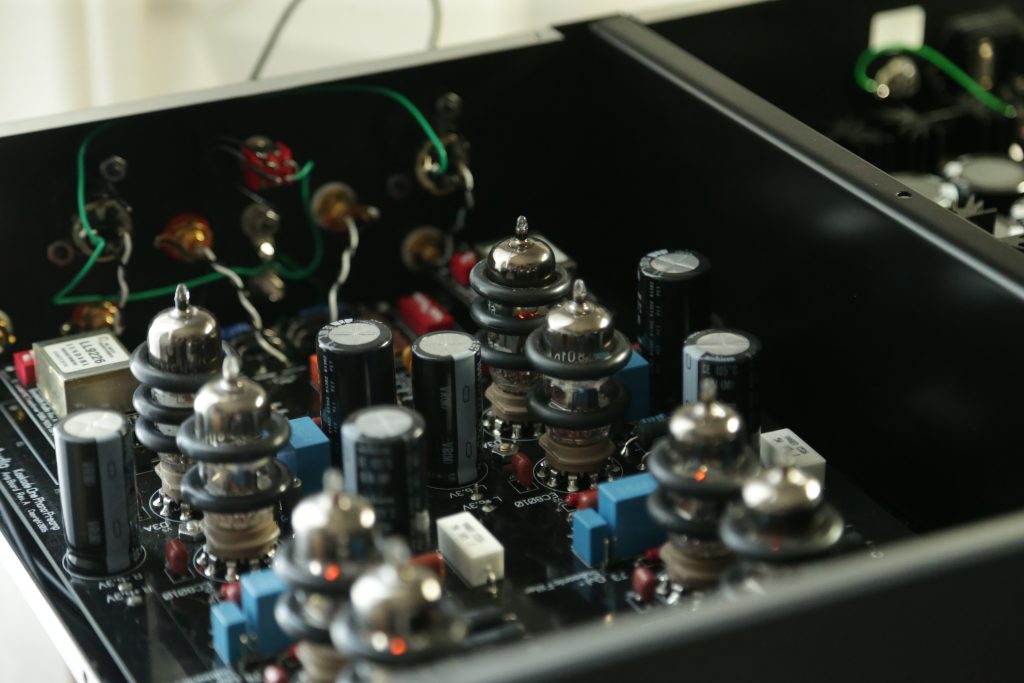
There are other factors that determine whether a phono stage is going to sound good as well. One such factor is the gain section, is it clean, is it solid state or tube-based, and so on. In the case of the Kaskode One, it is a tube phono stage with matched tubes and set up in dual mono, and it is extremely clean; the signal has no audible noise, which is the start to a great phono stage. Another criterion for me is adjustability. Every cartridge is a little different, and having a phono stage that can be set up to match those specs will get more out of it than one that can not. The Kaskode has adjustable Gain, Capacitance, and Resistance to make sure your cartridge performs at its peak. So the design is there, but is the sound? Let’s get into it more with some listening.
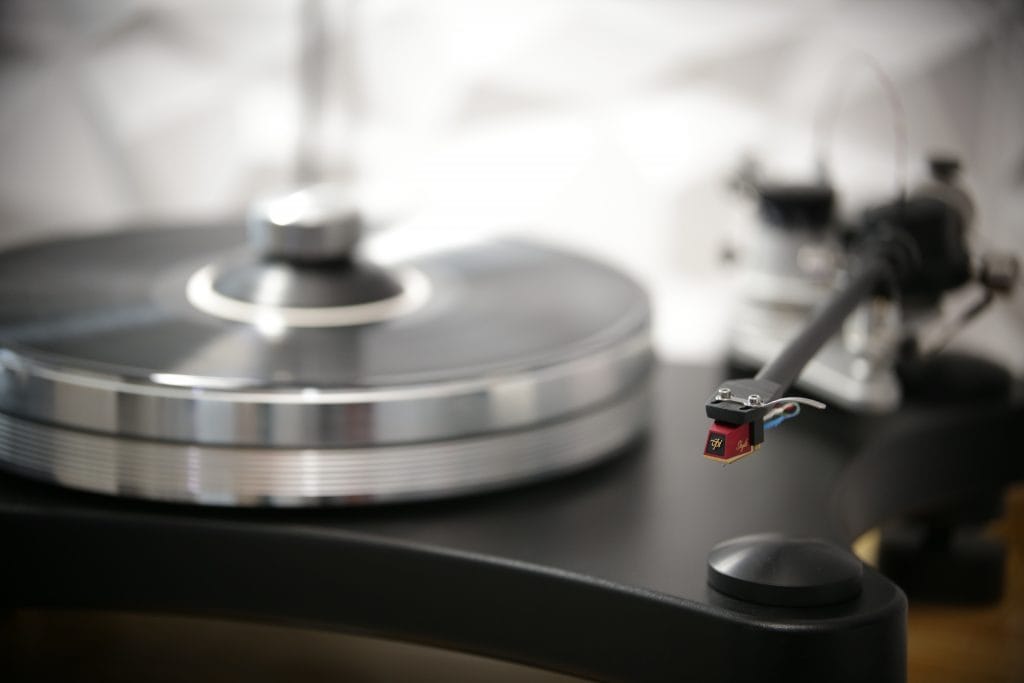
The first setup I used was the VPI Shyla cart on the VPI Prime using the 10″ JMW unipivot arm on the VTA base. One of the albums I played is “The Money Store” by Death Grips, a rap group, and it is certainly not for everyone, but it is a fairly demanding album, and I love their sound, making it a great test album. They mix electronic music with rap beats and almost punk rock or industrial style lyrics, reminiscent of some of the Beastie Boys’ tracks. The bass is intoxicating and full of energy; it’s also very fast, like blast beats fast at times. Throughout the mids and highs are plenty of synths and all types of experimental sounds that create the melody. There are several layers built up creating each track that could easily overwhelm an analog system and get muddy. Starting at the Shyla all the way to the Kaskode One, the sound is clear and detailed, making it easy to pick out every element. They also use a fair amount of panning in the mastering, so channel separation is crucial to getting the sound they are going for, as well as creating the phantom center.
I also played “Preachers Daughter” by Ethel Cain, an absolutely incredible album. Again, this isn’t going to be for everyone, but if you are curious how your system handles vocals and transients, this album takes full advantage of a capable system. The use of echo and reverb gives a great sense of space as well as defining the sound stage. Her melodies are bold and powerful, especially during the bridge, and with the Kaskode one, you can feel the emotion, the presence, and almost touch the music. Her storytelling abilities play a movie in my head, I don’t just hear the music, I can feel it, see it even. When the music hits more than one of your senses, you know you have something special, a connection to it.
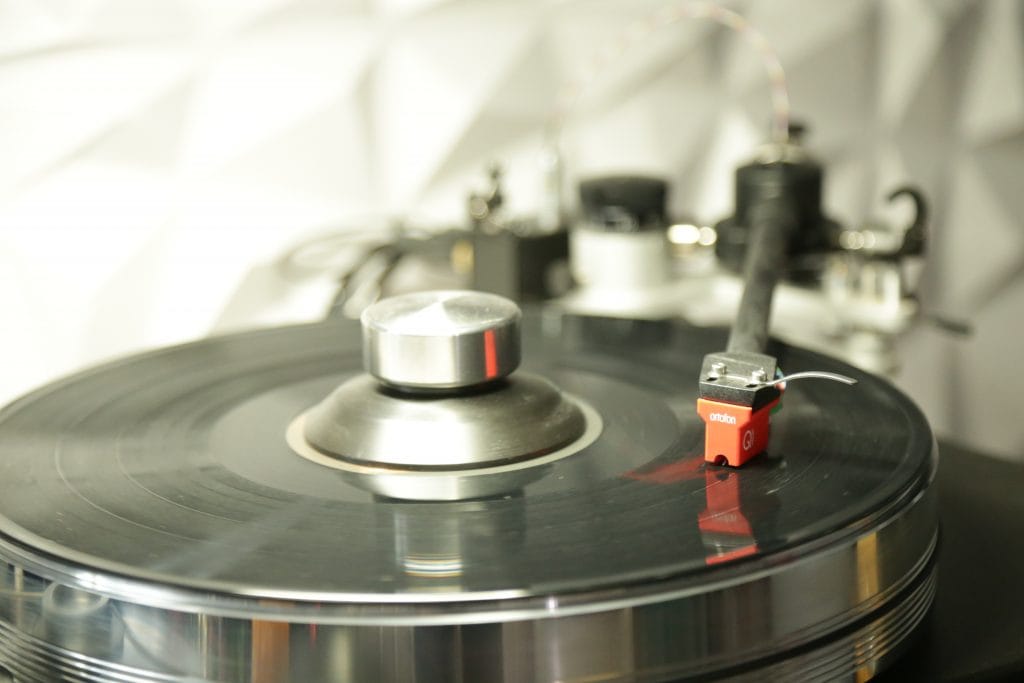
While it may seem odd to pair a $400 cartridge with a nearly $6,000 phono amp and a $5,000 dollar turntable, I set out to do it. You never know what someone may be using at home right now, and what I have learned is that alot of us have ot upgrade one item at a time and end up with unbalanced systems for a bit. It may also help them understand what I hear if their reference is a Quintet Red or similar cart. Also, it’s my job to try out as many things as I can. I can say, oddly enough, it made comparing the Kaskode One to the VPI Avenger a bit easier. The thing is, the Avenger is designed by the same guy who voiced the Shyla Cartridge and every other VPI cartridge. The thing is, the Avenger Phono is designed to work with those cartridges the best. The Ortofon, however, is a different case, so the loading options make a more appreciable difference in the cartridge’s performance.
When I first hooked up the Ortofon Quintet Red, I left all the settings the same as the Shyla cartridge to hear how much changing the settings to be optimal would affect the sound. I played Preacher’s Daughter again to listen for differences in both the cartridges as well as the loading settings. The most immediately noticeable change is the level of detail. The sound is also weightier, having more body. I also noticed the leading edge of each note is sharper. I will say that while the Ortofon Quintet Red is a perfectly fine cartridge, it is certainly a limiting factor in this setup, and the overall sound quality with the Shyla was better. That said, it is amazing how good the Quintet Red can sound with a tailored loading setup through the Kaskode One. If you upgraded to the Kaskode one and didn’t have the budget to buy a better cartridge, just know it will get every ounce of performance out of what you have in the meantime.
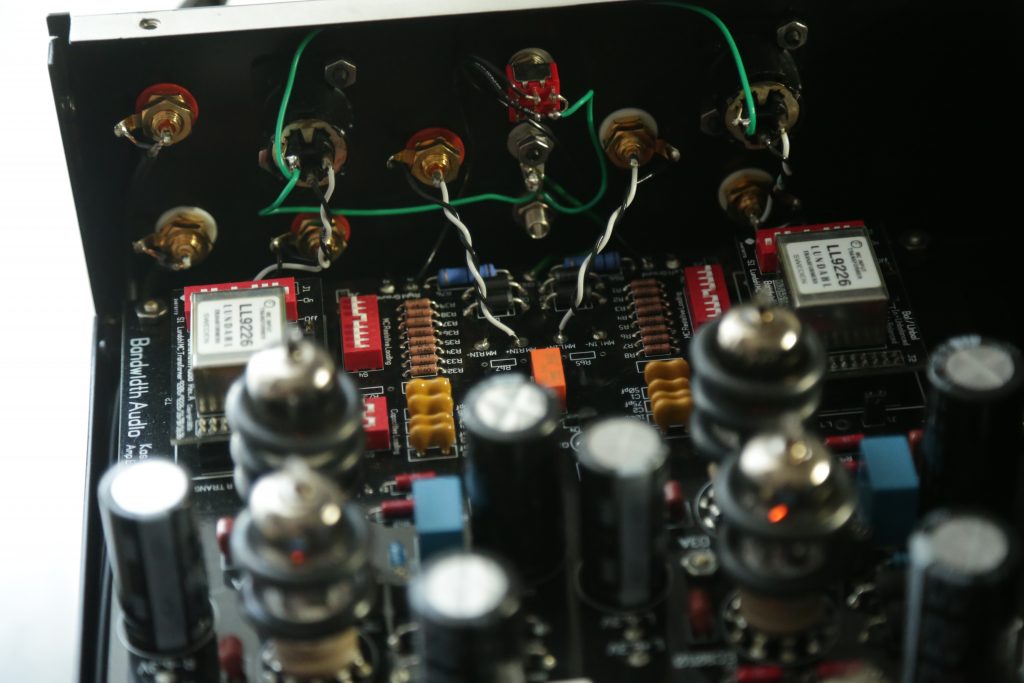
Overall Sound
The Kaskode one is a world-class phono stage. It is the best I have heard in my system and one of the best I have heard period. It also surprised me when listening to the rather entry-level Quintet Red, like this cart can sound this good? Yes, it can. However, with even better performing cartridges, you can get even better sound. The level of detail retrieval and resolution with the Shyla was tantalizing, to say the least. I played the Shyla on both the Prime and the new Forever Model One, and while the differences were subtle, the Forever One does a better job of isolation, as well as the arm is completely dead silent, so those small resonances just stop in their tracks. All that means is a cleaner signal to the Kaskode One, good in, good out, so better in, even better out.
The level of realism from the Kaskode One is both impressive and surprising. Not that I didn’t think it would have that good of sound, but rather I didn’t think how lifelike it sounded was possible in general. One of the things that lends to that realistic sound is dynamic range, and vinyl is already at a disadvantage, but just how dynamic every album sounded kept me engaged and excited. Low dynamics make everything sound dull and flat, and improper loading can dull the sound of a cartridge, whereas controlling it through proper loading means it tracks the tiniest highs in the grooves as well as the heavy bass and everything in between.
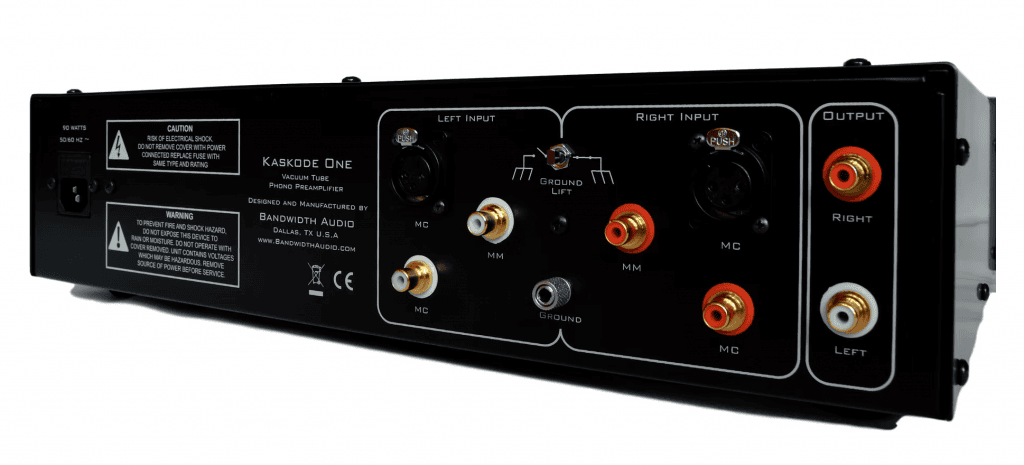
It’s hard to compare the sound to the two other phono amps I have, as the Pyxi, while a great little phono stage, is a very different product. It is an entry-level solid-state phono stage, though it does have some loading options on the back; it is not nearly as extensive as the Kaskode One. Sound-wise, it is less detailed and somewhat veiled sounding compared to the Kaskode One. I still love the Pyxi for what it is, but what it isn’t is a top-of-the-line phono stage with all the tuning options you could ever want. Compared to the Avenger phono stage is a little closer; the Avenger is a great phono stage, especially for the MSRP of around 2k. But what it lacks is tuning, granted, with the Shyla Cartridge, it is less of an issue as it works so well with VPI carts, but even still, the Kaskode One sounded better to me. The Kaskode has better clarity, dimension, and more soul.
Something else you notice with the Kaskode is the channel separation and how much it affects the sound stage. In songs that take use of panning to place various instruments or vocals on one side, or the other, or anywhere in between, having great separation really helps place those elements in space. As we refer to as the Imaging or how holographic the sound is, it is a major part of creating that realism we look for in our hifi systems. Being able to point to a place in your room where the drums or violin or what have you is, brings that sort of live performance home. The Kaskode One really shines in this aspect, and when paired with quality electronics, it sounds simply magnificent.
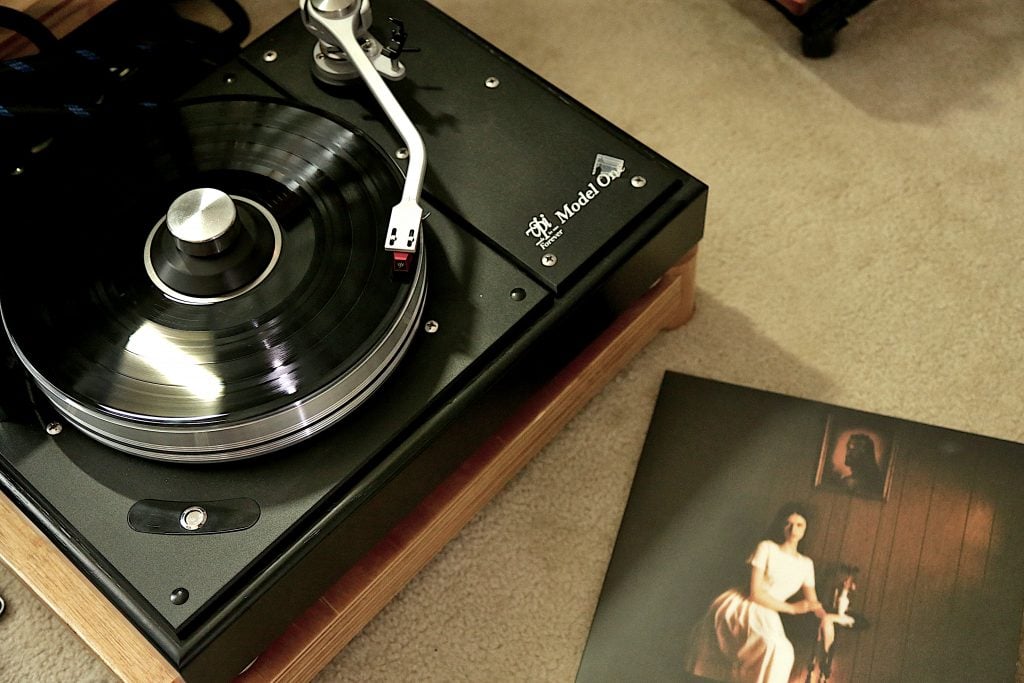
Pros And Cons
Pros:
- Good build quality again
- Great sound quality
- Truly Analog
- Nearly unlimited tuning options
- Clean Design
- Satisfying switch feel
- MM and MC support (with optional module)
- User Upgradable
Cons:
- Tuning requires the removal of the case
Specs and Features:
Features:
- SHIPS WITH NOS SIEMENS D3A AND EC8010 GOLD PIN TUBES
- IN-HOUSE MATCHING OF TUBES ACROSS GM, MU, RP, & IA
- MC MODULE CAN BE INSTALLED BY THE USER AS AN UPGRADE
- HIGH PERFORMANCE LUNDAHL MC TRANSFORMERS
- SUPPORTS 1:5 1:10 AND 1:20 STEP-UP RATIOS
- SUPPORTS BALANCED AND UNBALANCED CONNECTIONS
- XLR AND RCA INPUTS FOR MOVING COIL MODE
- MUTE SWITCH TO EASILY QUIET PLAYBACK
- DUAL MONO REGULATED POWER AND FILAMENT SUPPLIES
- SELECTABLE SUBSONIC FILTER TO REMOVE WARP AND RUMBLE BELOW 20HZ
- TIME DELAY OUTPUT ACTIVE CIRCUIT FOR POP FREE STARTUP AND SHUTDOWN
- CUSTOM DESIGNED LOW FLUX DENSITY EI TRANSFORMER
- EXTRA THICK FR4 PRINTED CIRCUIT BOARDS
- ALUMINIUM CHASSIS WITH STEEL DIVIDER FOR LOWEST NOISE
- GROUND LIFT SWITCH FOR FLEXIBILITY WHEN INTEGRATING WITH AN AUDIO SYSTEM
- SORBOTHANE® FEET FOR VIBRATION ISOLATION
Specs:
Gain MM Mode
46dB
Gain MC Mode (with MC Module Installed)
60dB (1:5 Step-up)
66dB (1:10 Step-up)
72dB (1:20 Step-up)
Channel Balance (Both MM and MC)
<0.2dB
THD+N (MM 3.5mV Input 1KHZ)
<0.05%
RIAA Accuracy
+/- 0.2dB from 20Hz to 40KHz
Frequency Response (-3dB down)
<10Hz and above 175KHz
MM Input Referred Noise (A-weighted)
0.2uV
-132dBu
88dB SNR relative to 5mV input
MC Input Referred Noise – 1:10 (66dB) Mode (A-weighted)
0.058uV
-142dBu
72.5dB SNR relative to 250uV input
Rated Output
15V at 0.5% THD+N
MM Input Resistance
47KΩ
Specs Cont.
Input Capacitance (Selectable)
50pF, 75pF, 100pF, 125PF, 150pF, 175pF, 200pF, 225pF, 250pF, 275pF, 300pF, 325pF, 350pF, 375pF or 425pF
MC Input Resistance for each Step-up Ratio (Selectable)
60dB (1:5): 1910Ω, 1590Ω, 1230Ω, 830Ω, 630Ω, 430Ω, 254Ω, 157Ω or 70Ω
66dB (1:10): 478Ω, 398Ω, 308Ω, 208Ω, 158Ω, 108Ω 64Ω or 39Ω
72dB (1:20): 119Ω, 99Ω, 77Ω, 52Ω, 39Ω, 27Ω or 16Ω
Recommended Load (Output)
10KΩ or greater
Tubes (Tested and Matched in House)
2x D3A NOS Gold Pin Siemens
6x EC8010 NOS Gold Pin Siemens
Voltage
Available in 115-120VAC or 230-240VAC
Power Consumption
90 Watts
Dimensions (Includes faceplate and feet)
17.5” x 14.25” x 4.5”
Due to the open-loop design of this amplifier, actual performance will vary depending on the vacuum tube quality. Specifications subject to change.
Price: 5299.99, Optional MC module: $599.99, for a total as-tested price of $5,899.98
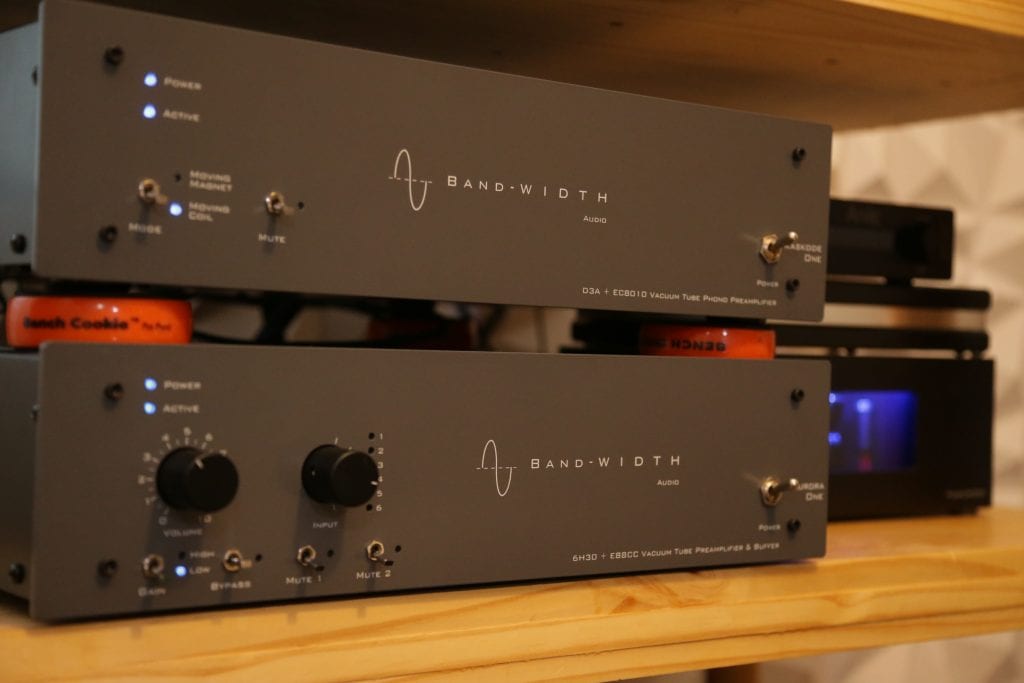
Associated Equipment
- Marantz SR7009 Preamp
- Bandwidth Aurora One Preamp
- VPI Avenger Phono
- VPI Prime with 10″ Unipivot arm on VTA base with Ortofon Quintet Red and Shyla Cartridges
- VPI Forever Model One with S arm and Shyla Cartridge
- Sonus Faber Sonetto V
- YG Cairn
- Magneplanar LRS+
- Paradigm Defiance V8 Sub
- Bandwidth Audio 288 Monoblocks
- Mcintosh MC 250
- Onkyo M5140
- Synergistic Research Powercell 8 SX
- Synergistic Research Foundation SX cabling
- Viborg Power Cables to the amps only (not enough SR on hand)
Conclusion:
Just like the 288 Monoblocks and the Aurora One, the Kaskode One is an incredible product that performs beyond its price point. You get a state-of-the-art phono stage that could very well be the last one you ever need. The only thing it doesn’t do is Optical Cartridges, but for Moving Coil and Moving Magnet, it does everything you could want it to. The ability to tune it to your specific cartridge and get the absolute most out of it is worth so much. The sound quality is beyond impressive, with precise imaging, a wide stage, and great range, you are sure to discover details in your vinyl collection you never heard before. The Kaskode One gives music its soul and has just enough warmth to make albums rich and full of life without making them muddy. The Kaskode One is one of the best Phono Stages I have ever had the pleasure to listen to. If analog playback is a serious part of your hifi setup, you should check it out for an in-home audition.
For more information about Bandwidth Audio click the link below:




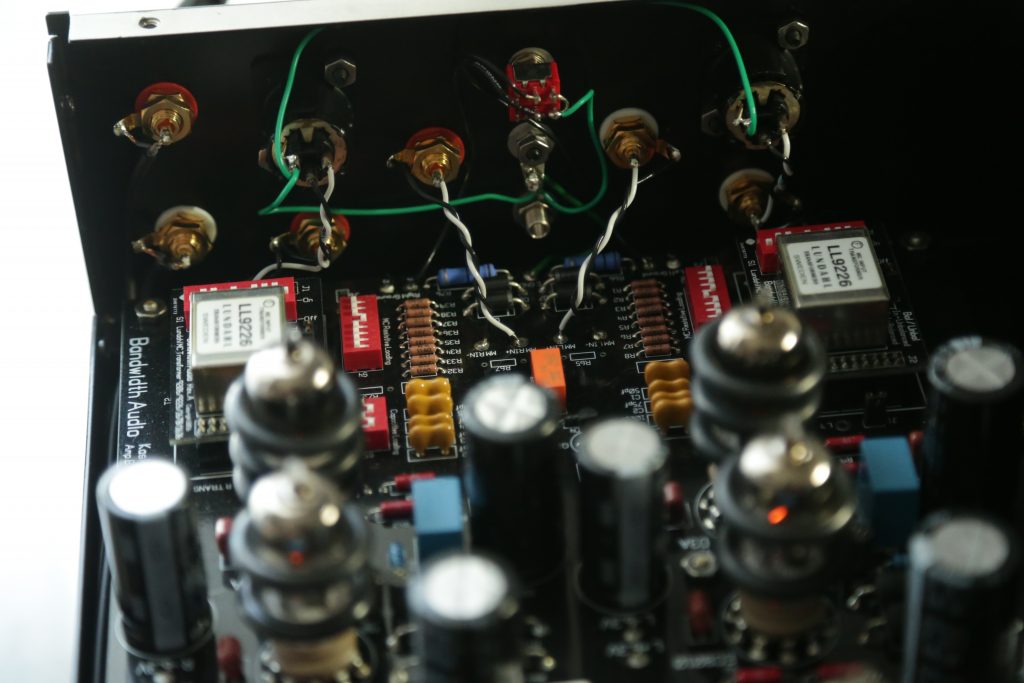


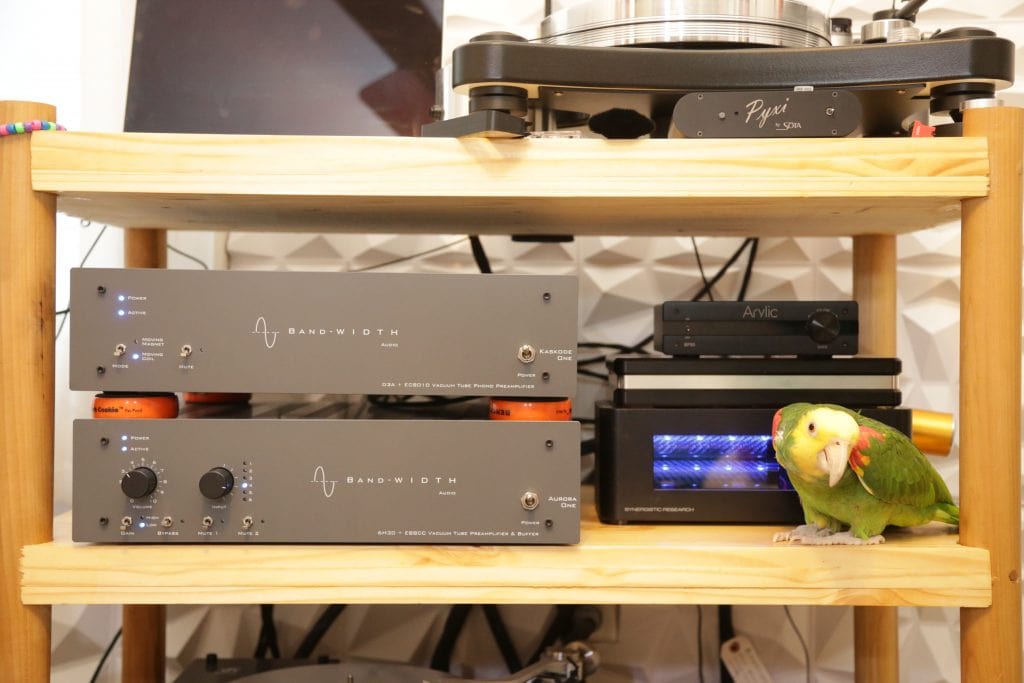
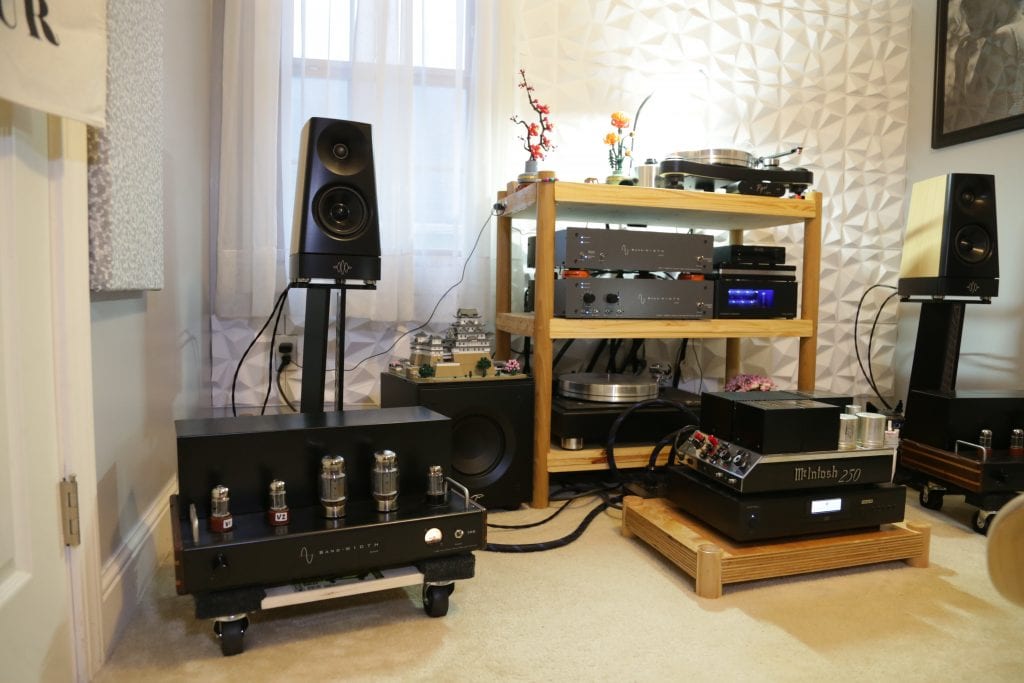
Disclaimer: Bandwidth Audio supplied Hifi Chicken with a demo Kaskode One for the purpose of this review. Bandwidth Audio nor any affiliate paid in part or in full in exchange for this review.
One thought on “(Review) Bandwidth Audio Kaskode One – A World Class Phono Stage”